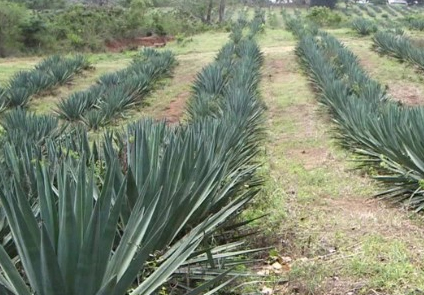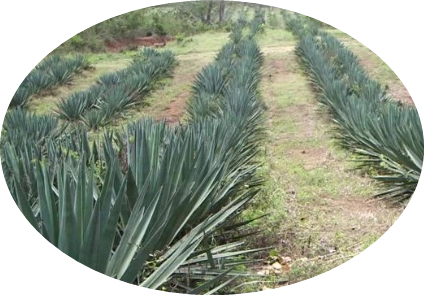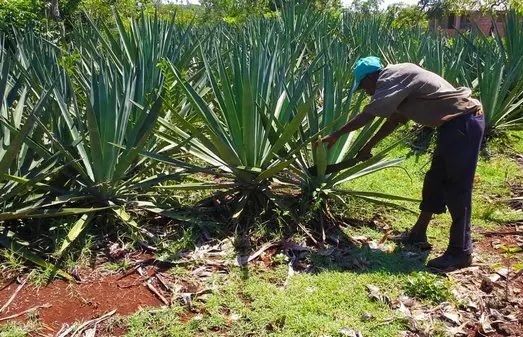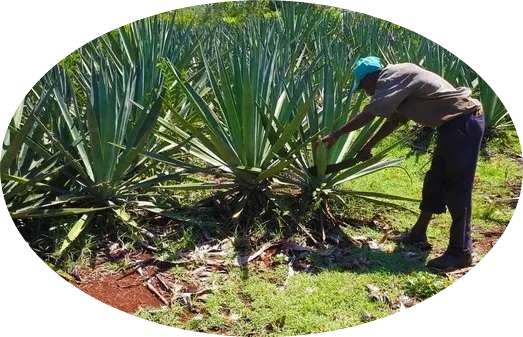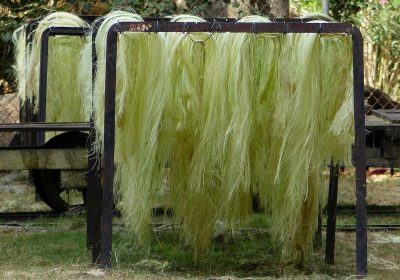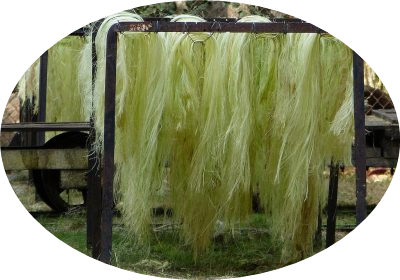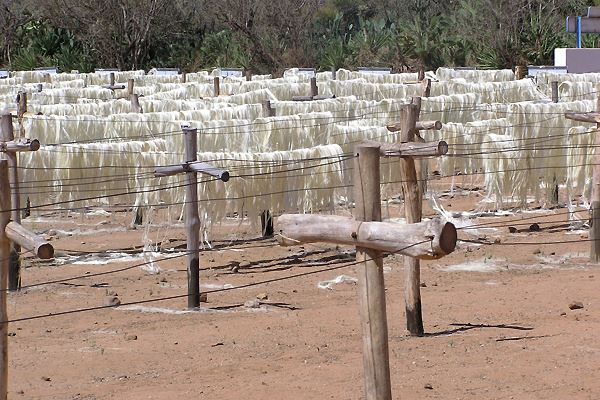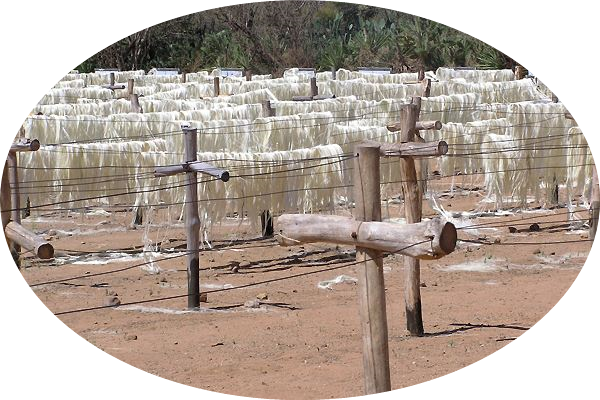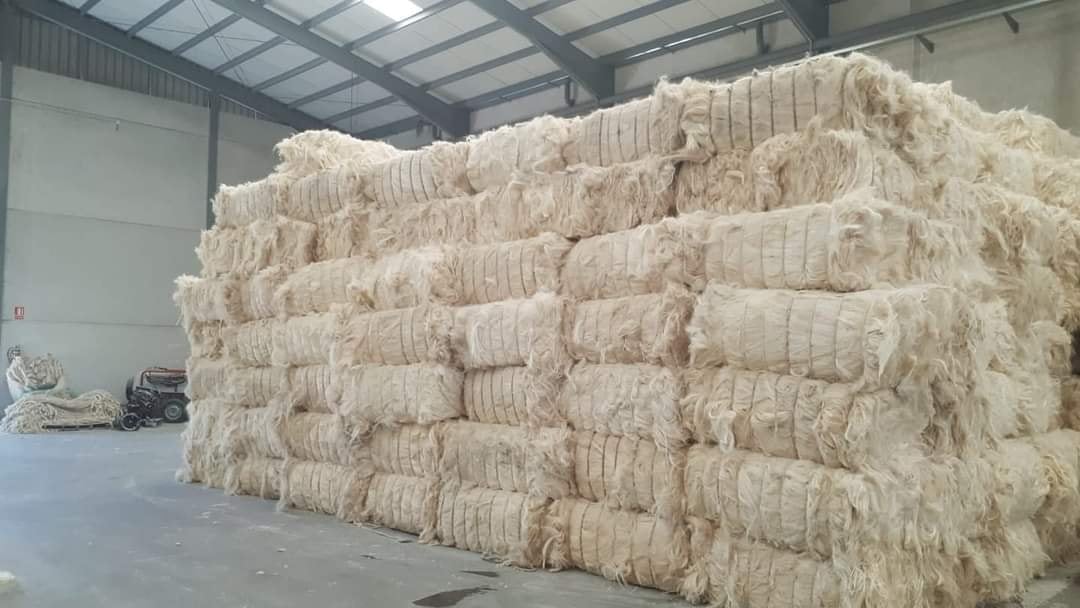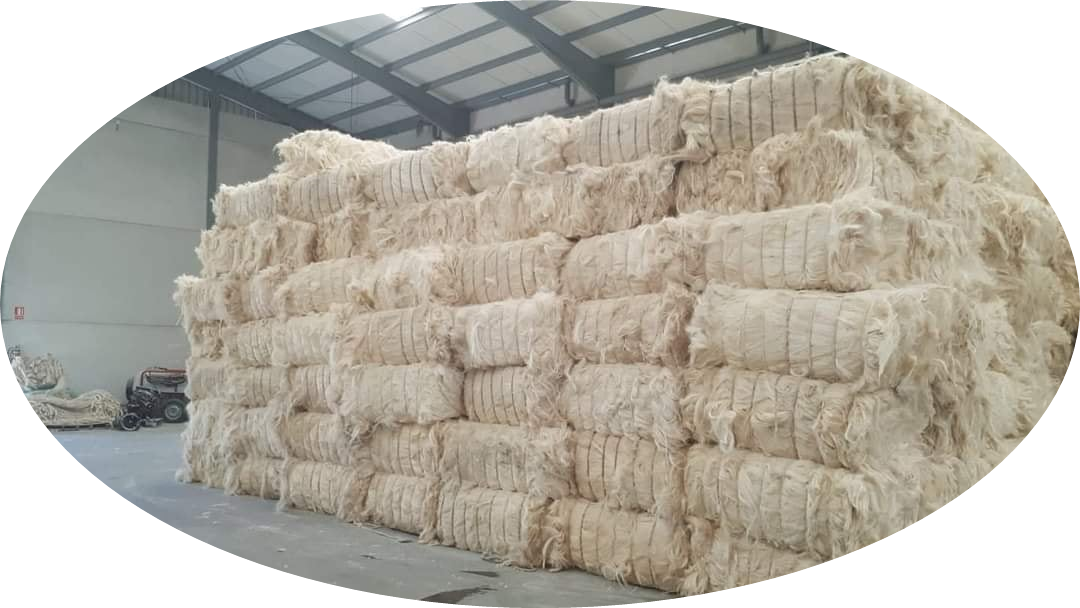Sisal Fiber is one of the most widely used natural fibers and is fully biodegradable. The fiber is exceptionally durable and low maintenance with minimal wear and tear. The fiber is obtained from sisal plant and known formally as Agave sisalana. These plants produce rosettes of sword-shaped leaves which start out toothed, and gradually lose their teeth with maturity. Each leaf contains several long, straight fibers which can be removed in a process known as decortication. During decortication, the leaves are beaten to remove the pulp and plant material, leaving the tough fibers behind. The fibers can be spun into thread for twine and textile production or pulped to make paper products. m
